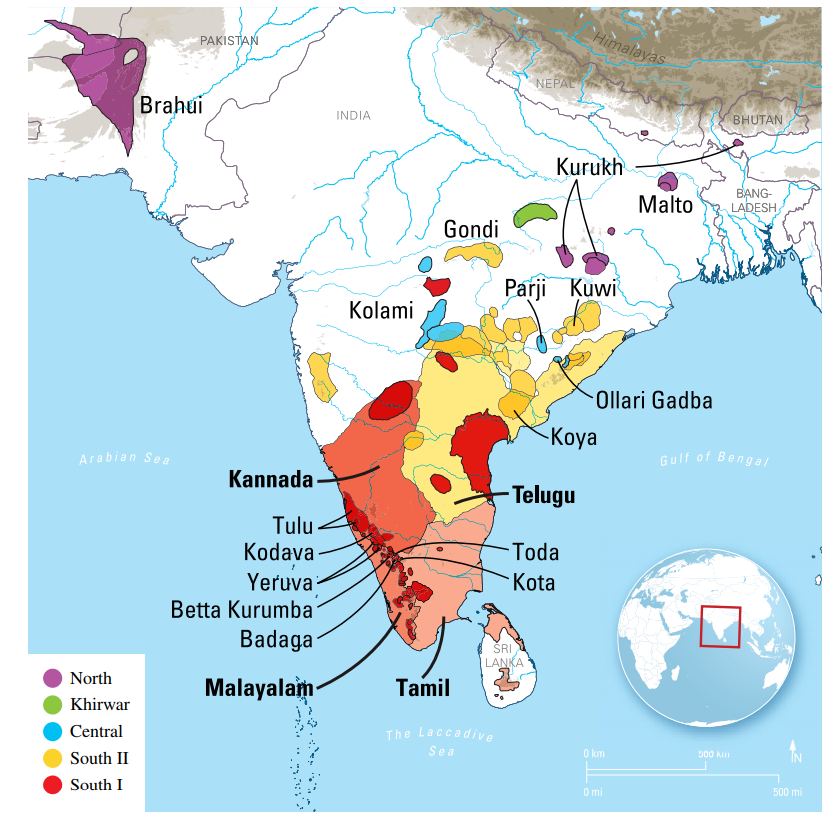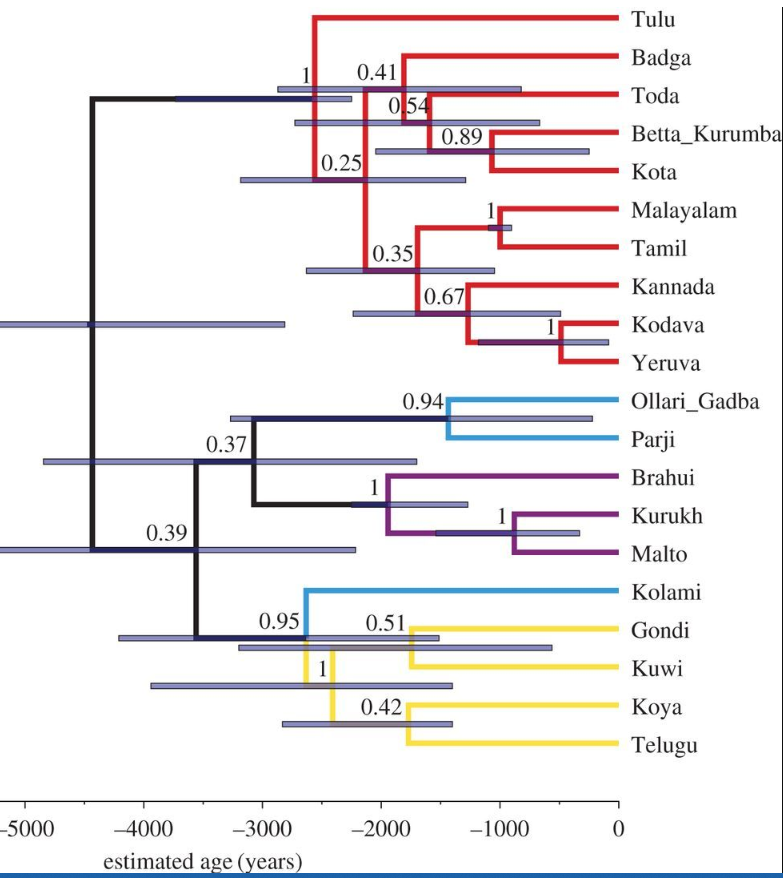

Harappan times
Harappans spoke a now lost/ subsumed language. In their southern borderlands were DR speakers who admixed with them and acquired some of the Harappan cultural elements.
IA interactions
- IA met, and culturally influenced Dravidian language speakers, leading to acquisition of beneficial meme-plexes. They, as a consequence, expanded in to peninsular India, mixing and linguistically dominating the proto-Indian tribes.
- This is indicated [TW16 N16] by estimated time of L1 haplotype’s blooming after the blooming of the R1a haplotype.
- SE Asian examples- See Khmer.
Bronze age
karNATaka
Karnataka by 2300-2200 BC had domesticated several local plants for farming. Then numerous sites there were abandoned in that period, many cattle stockades were burned in enormous fires, & new pastoral practices appeared in Karnataka with new settlements. Copper and bronze introduced to Karnataka between 2100-1700 BC.
Bronze age collapse
The Deccan experienced the Bronze Age Collapse. Economic and social complexity declined, and population shifted from farming to pastoralism. In spite (or because of?) this, metallurgy improved.
Iron age
Independent development of ironworking in India. Starting in Malhar, Chhattisgarh in 20th century BC, it spread to Ganga Basin by 17th century, Karnataka by 13th century, and the entire subcontinent by the 9th century.
tamiL nADu
Mysore transitioned directly from Neolithic to Iron Age in late 2nd millennium BC. Tamil Nadu and Sri Lanka made same transition in early to mid-1st millennium BC, and had several relatively large settlements of over 1000 hectares, indicating massive population growth.